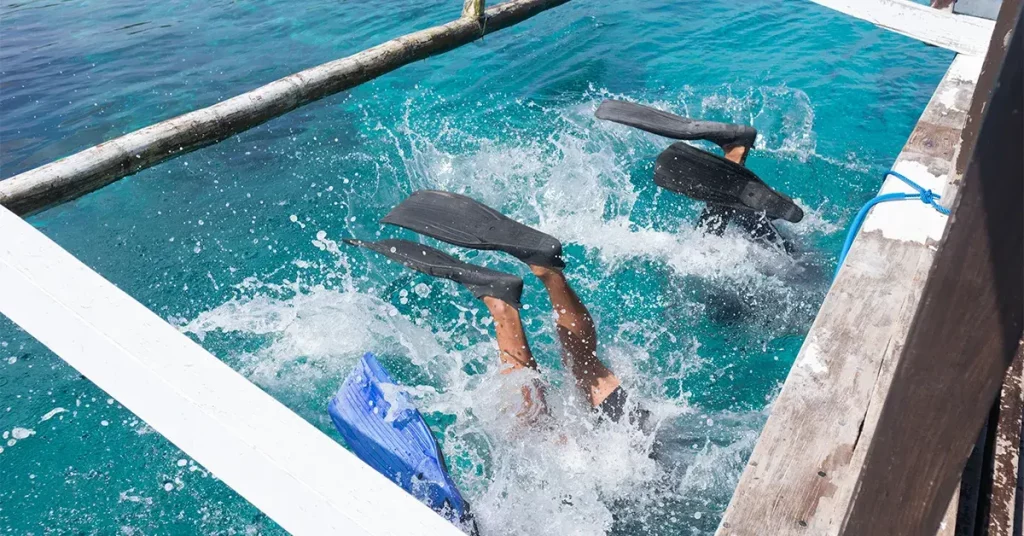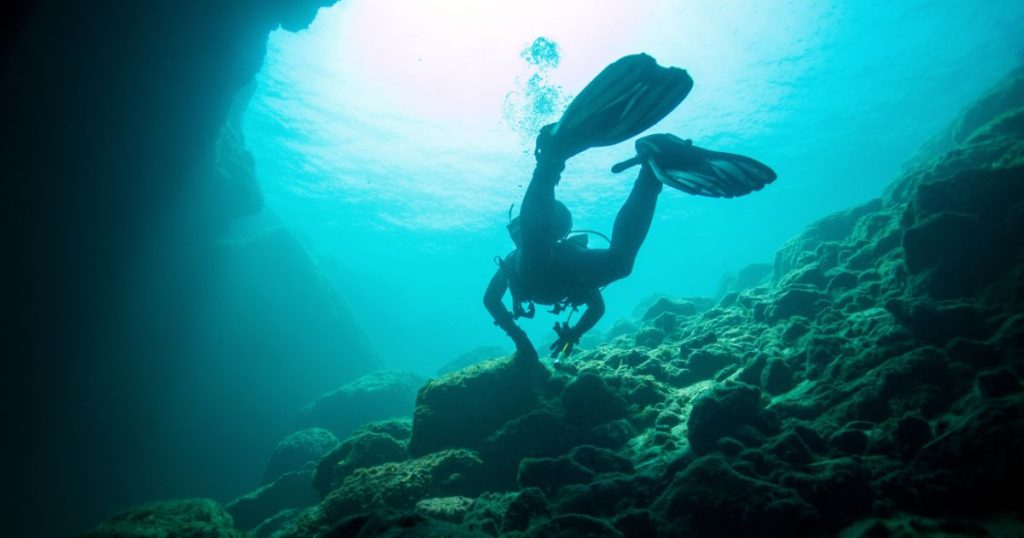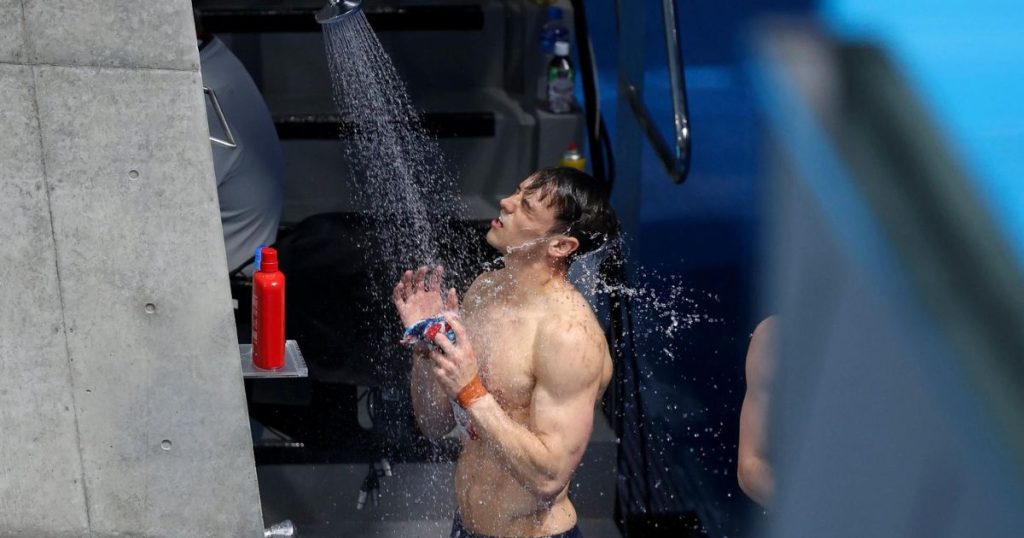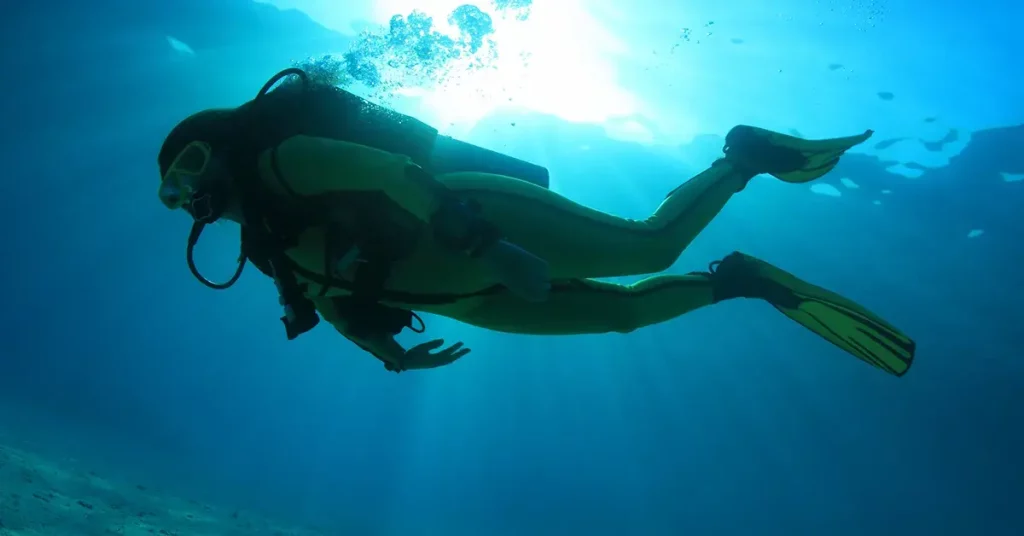A common question asked by both diving newbies and curious observers is “Why do scuba divers dive backwards into the water?” The conversation goes something like this:
Diving newbie: “Say pal, why is it that scuba divers fall backwards into the water?”
Diving veteran: “Well that’s easy to answer – they fall backwards because if they fell forwards they would still be in the boat…”
Much hearty belly laughter ensues (or not)…
This classic joke may be the oldest in diving history, but the question behind it is a good one. Divers enter the water backwards for a number of reasons – which this article will make clear.
If you’ve ever seen a diver enter the water backwards it might seem like a counterintuitive way to enter the water. Why not just fall face forwards? Surely that would be a simpler way to dive in?
The Backward Roll Explained
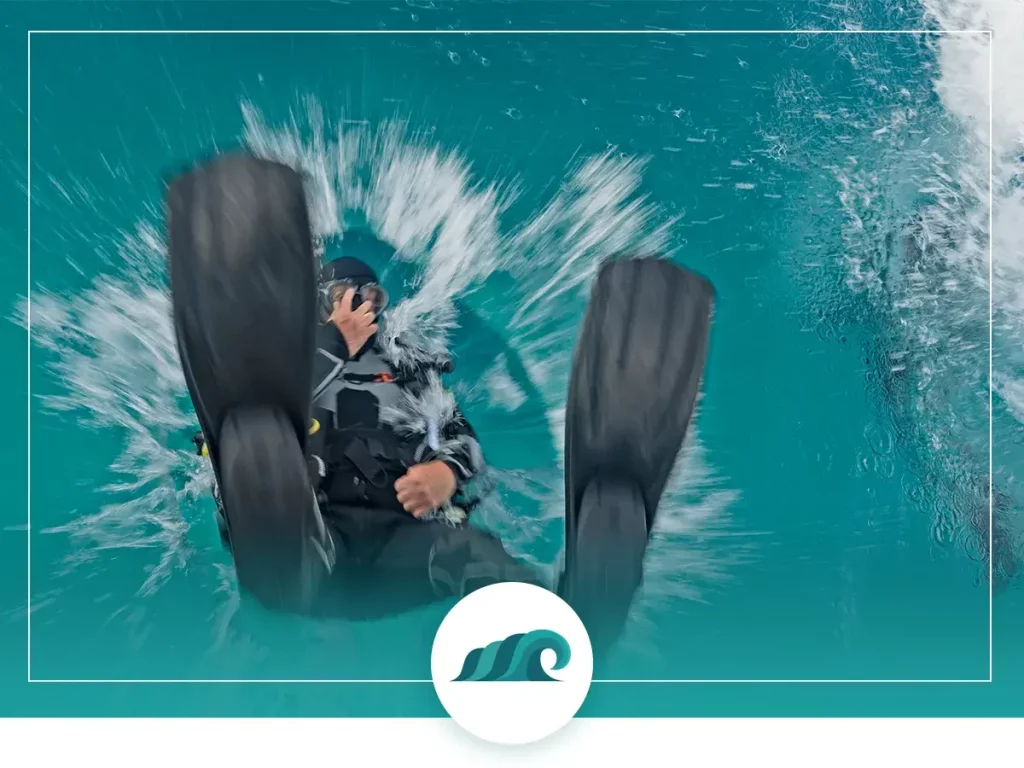
Divers enter the water in a few different ways, but one of the most common is called the ‘backward roll entry’, ‘back entry’ or ‘backroll’. This is when the diver sits on the edge of a small dingy or zodiac boat, holds onto their regulator mouthpiece and simply allows gravity to carry them underwater.
There are a number of reasons diving backwards can be advantageous:
If you’re diving from a smaller dinghy or RHIB (rigid hulled inflatable boat), then standing up on the gunwales (outer edge of the boat) could cause the boat to rock from side to side and become dangerously unbalanced. Staying seated on the gunwales keeps the boat’s center of gravity lower, and prevents the craft from becoming unbalanced.
If you’ve ever belly flopped from a diving board, then you know how painful falling face first in water can be! It’s irritating enough when you’re just wearing a swimsuit – but can be much more annoying when wearing full dive gear. Your mask can fill with water, or get dislodged completely. Your regulator mouthpiece can also get knocked out of place, and your dive fins can even come off.
Entering the water backwards also prevents you from having to walk around on deck with full dive gear on. If you’ve never attempted this before, let me tell you it’s harder than it looks. Diving fins are not the easiest footwear to walk around in.
Safety Concerns
Diver safety is of utmost importance whenever you engage in any type of diving. Although it may not look like it at first glance, falling backwards is a very safe method of entering the water.
A standard diving cylinder weighs approximately 30 – 35 pounds, so you really don’t want it to shift and hit you in the back of the head. This could occur if you jumped in head-first.
Also, when you enter the water backwards, any underwater obstacles would hit the tank first instead of your body. Obviously you should know what’s below the surface whenever you dive, but sometimes accidents happen. If anything were to go wrong during a backwards entry, you would have the advantage of being face up in the water instead of face down.
Another key aspect of diving safety is having a good dive float and flag to keep you visible.
How to Do a Back Roll
Preforming a backward roll is fairly straightforward.
Sit on the edge of the boat or platform while facing forwards with all your dive gear already on. Then, take a quick look behind you to make sure the area is clear of other divers or debris. Hold onto the front of your mask with your right hand to make sure it stays in place. With your other hand, keep your regulator in place in your mouth. Then, simply fall backwards allowing gravity to pull your body below the surface.
Other Entry Methods
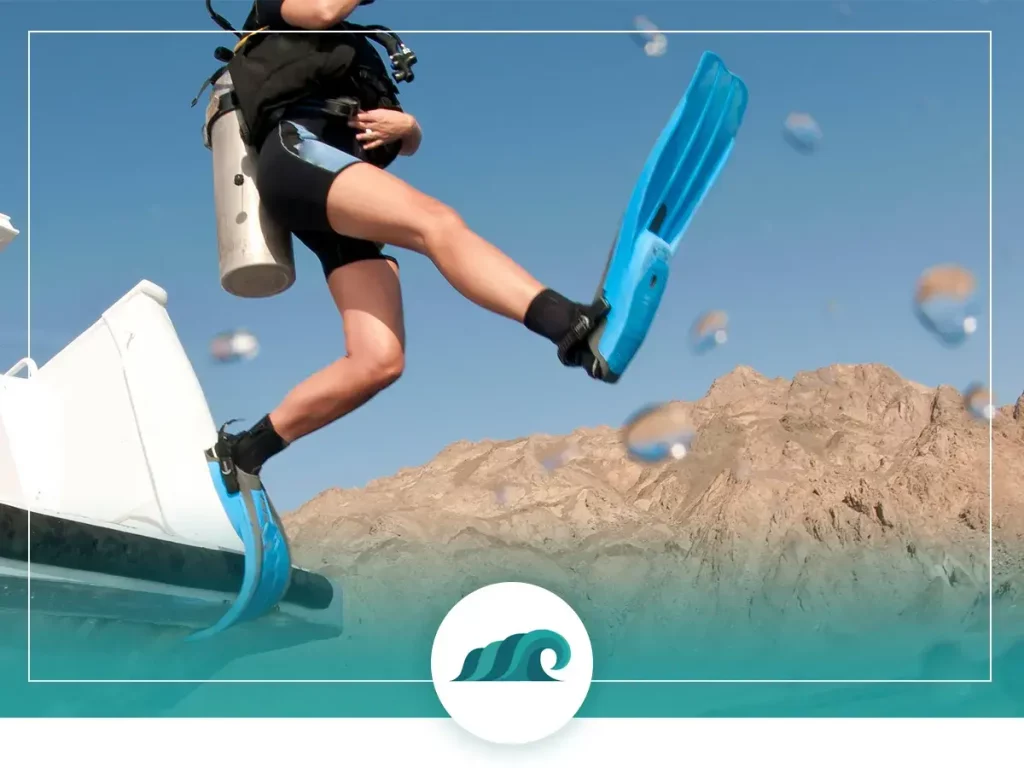
The backward roll entry is a great way to enter the water from a smaller boat or low platform, but depending on the situation, there are several other entry methods that might be preferable.
Giant Stride Entry
The giant stride is probably the next most recognizable way to enter the water. It works well on docks, stable platforms, and larger boats with a dive deck.
Preforming the giant stride is also fairly simple. You approach the entry area and stand on the edge with your fin blades extended over the water. Next you check the area to make sure it’s clear of other divers. When you’re ready to jump, secure your facemask and regulator to your face with the palm and fingers of one hand. With other hand you can secure your weight belt or hold any gauges close to your body.
To perform the stride – look straight ahead and take one giant step forwards. This will pull the rest of your body forwards, allowing your tank to clear the deck and moving you vertically down into the water.
Controlled Seated Entry
The controlled seated entry is a controlled entry where you pivot into the water from a seated position. It’s used in areas with currents or shallow reefs where there may not be enough room for a backward roll or giant step entry.
This entry begins by sitting face forwards on the edge of a boat or platform. You then place both hands to one side of your body facing inwards on the surface of the ship’s deck or platform. Both hands should be flat. You then pivot and shift your weight towards the water, transferring your weight onto your arms. Now you can slowly lower yourself into the water without making much of a splash.
This method also works well for people with back problems or other mobility issues.
How Not to Enter the Water
While it might look pretty slick, the James Bond roll entry is probably not the safest way to enter the water. Check out this video showing a bunch of divers trying (and failing) to execute this front roll entry.
Hopefully that gives you a clear answer on the subject. And the next time someone asks “Why do scuba divers dive backwards?” you’ll be well prepared with an explanation (or you could give em the old joke response).

